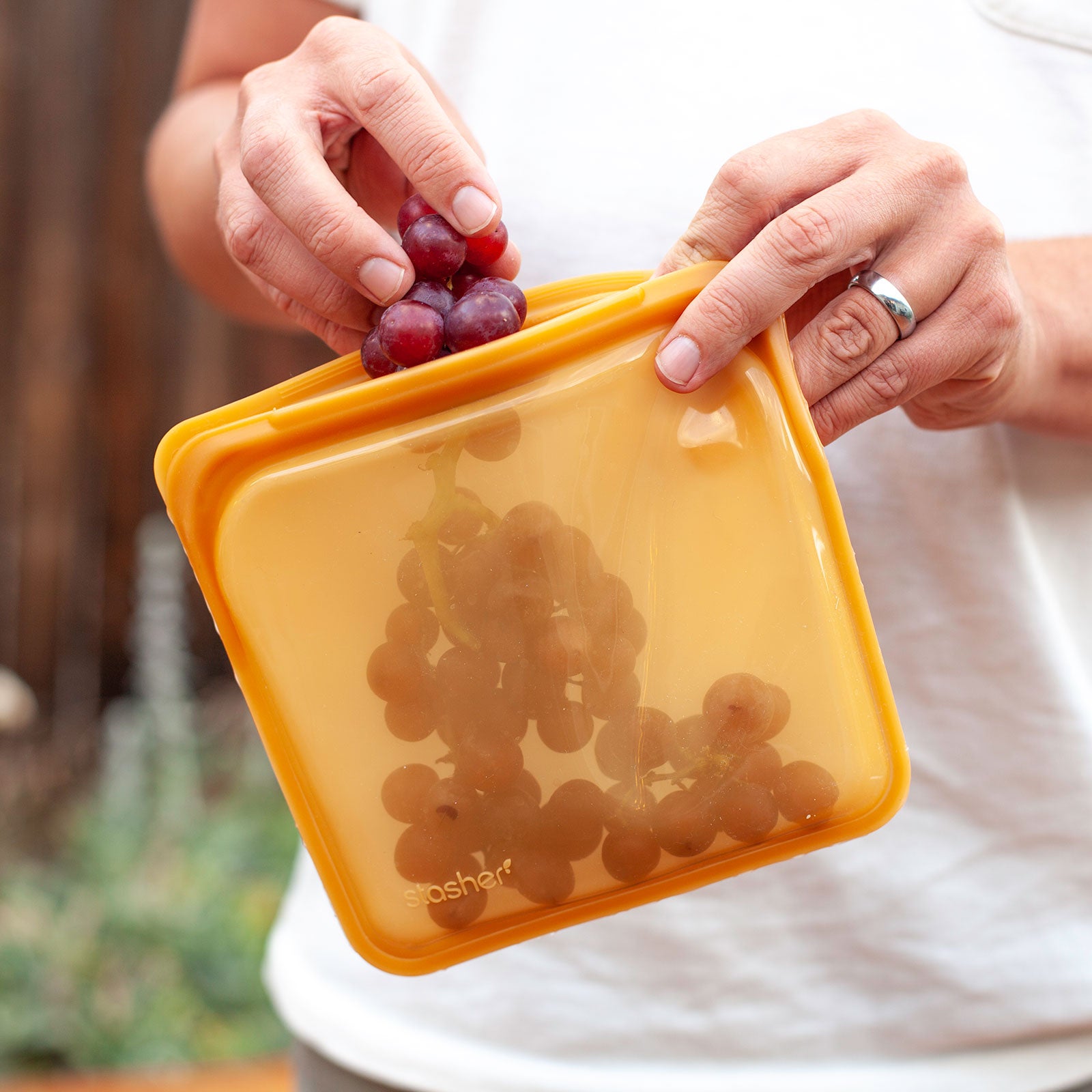I saw hundreds of new products in June at the Outdoor Retailer Summer Market trade show in Denver, everything from thousand-dollar jackets with 3-D-printed membranes to a pair of socks with a graphic of an outhouse in the shape of a rocket ship on them. While I salivated over a $100 titanium water bottle from Hydro Flask and went deep on a down-repurposing program from the North Face, the piece of gear I’m most stoked about is the $12 from Stasher.
You read that right. Stasher, based out of Emeryville, California, constructs the bag from pure platinum silicone, meaning there’s no plastic. Sounds boring, but I promise you, it’s actually quite cool. Silicone is made from silica (a.k.a. sand) as opposed to plastic’s petroleum, so it’s more environmentally friendly. Silicone also has a considerably higher heat tolerance (400 degrees) than plastic, making it safe to dunk in or fill with boiling water and microwave. This sandwich bag is the perfect featherweight, reusable food-storage piece for backpacking.
Stasher’s pure silicone self-sealing bag is the first of its kind, which begs the question: Why hadn’t someone come up with one before? The answer: it was considered too difficult to create a closing mechanism using silicone, because the material was too soft. “We had one engineer describe it as building a wall out of Jell-O,” Stasher brand director Katie Reinman says. It took Reinman, founder Kat Nouri, and multiple engineers three years to solve this problem. After they did—by making the silicone around the closure rigid enough so that it would stay snapped together—and brought the bag to market in 2016, they won Global Innovation and Red Dot awards within months.
Stasher has been marketing itself primarily to the food and wellness industry until now. This was the brand’s first Outdoor Retailer. But the jump from the kitchen to the campsite makes sense. The bag’s high heat tolerance and lack of creepy chemicals mean I can pour boiling water right into it from my Jetboil to rehydrate camp meals. This is amazing for backpacking, because I can use what I store my dehydrated couscous in both to cook and eat the food, no swapping vessels required. The container also happens to weigh next to nothing (a mere 2.6 ounces) and can be reused for years. (Full disclosure: I’ve been known to hang onto the pouch from a meal and use it several times to cut down on weight for longer trips. But no more.) On the car-camping front, I can take my time cooking delicious meals at home, freeze them in the Stasher, and then just pour in boiling water to defrost and warm them up, saving me cooking time later on.
Oh, and the Mojave colorway—coming soon—makes this sandwich bag look cooler than a Ziploc. While I’ll of course use this Stasher to carry food for my daughter on our hikes, I’m also planning on whipping up some wild dehydrated concoctions from the bulk section of my local grocery store for backpacking trips this summer. Let’s hope my chili, couscous, and brewer’s-yeast stew recipe ends up as delicious as I imagine.


